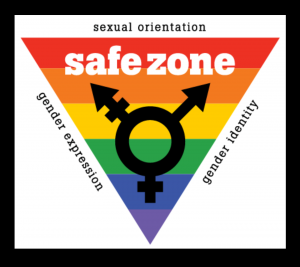With absolute certainty, at some point you may have said or heard someone else say, “he’s such a narcissist,” or “she’s so narcissistic.” In the field of psychology, there is such a thing as narcissistic personality disorder, which is diagnosed upon meeting several distinct criteria.
The key diagnostic features are as follows:
- “has a grandiose sense of self-importance;
- is preoccupied with fantasies of unlimited success, power, brilliance, beauty, or ideal love;
- believes that he or she is ‘special’ and unique and can only be understood by, or should associate with, other special or high-status people;
- requires excessive admiration;
- has a sense of entitlement;
- is interpersonally exploitive;
- lacks empathy; is unwilling to recognize or identify with the feelings and needs of others;
- is often envious of others or believes that others are envious of him or her;
- shows arrogant, haughty behaviors or attitudes.” (American Psychiatric Association, 2013, p. 669-670).
Most people involved in relationships with individuals with narcissistic personality disorder will often describe the interaction much like walking on eggshells. In order to imagine this type of individual, there are some movies that depict characters with this type of personality; think Meryl Streep in The Devil Wears Prada. Other examples include Christian Bale in American Psycho, Ben Stiller in Zoolander, Vivien Leigh in Gone With the Wind, and Michelle Pfeiffer in White Oleander.
There are some very typical interactions one would very likely experience if involved with someone with narcissistic personality disorder. One of these types of interactions is known as Love Bombing. Used as a method of luring their victims, this plays out like very romantic gestures or words, intense flattery, and constant displays of affection. This tends to inflate the victim’s confidence and drives his/her desire to have this continued level of affection and attention. While the victim is believing all these grand gestures are about him or her, the reality is these techniques are used by the narcissist to inflate his or her own sense of admiration and self-esteem. Mirroring is another strategy used by individuals with narcissistic personality disorder. Narcissists will put forth effort to have their victims perceive they are just like them and the two have a great deal in common. Victims often feel they have found their soulmates. Through this envy-inspired mirroring, victims lose their sense of uniqueness and self-esteem is lowered over time. Narcissists are also well-versed in the silent treatment. In addition, they often project their own undesirable beliefs or perceptions of themselves onto their victims. Another common strategy, known as Gaslighting, involves use of psychological abuse where the narcissist will present inaccurate information to the victim in order to have them question or doubt themselves, their memory or perception, and sometimes even sanity.
Any of this sound familiar or resonate with you? If you find yourself really identifying with the characteristics and behaviors detailed above, you will also probably recognize instability in your interpersonal relationships and a fair amount of dissatisfaction. If you desire to learn more about yourself, what motivates your behaviors, and possibly consider change, I would suggest talking to a professional; find a therapist, such as myself, who is confident with personality disorders. If you find yourself on the other end of the spectrum, believing you may be a victim, there is equally help for you. I would also suggest you reach out to a therapist and also one who is well-trained in working with personality disorders. In the meantime, please see the listing below for some helpful resources for victims, but do not solely resort to trying to resolve this on your own. It can be immensely helpful to get support and help through this detachment and healing process.
Helpful website:
Out of the Fog: Information for those with a family member or loved with who suffers from a personality disorder.
Helpful readings:
Disarming the Narcissist: Surviving and Thriving with the Self-Absorbed by Wendy T. Behary
Narcissism: Surviving the Self-Involved – A Little Primer on Narcissism and Self-Care by Meredith Resnick
How to Survive Loving a Narcissist by Dr. Andrew M. Goodman
Why is it Always About You?: The Seven Deadly Sins of Narcissism by Sandy Hotchkiss
Narcissism: Enter the Mind of a Narcissist! by Clarence T. Rivers
Who’s Pulling Your Strings?: How to Break the Cycle of Manipulation and Regain Control of Your Life by Harriet B. Braiker, Ph.D.
References
American Psychiatric Association. (2013). Diagnostic and statistical manual of mental disorders: DSM-5. Washington, D.C.: American Psychiatric Association.
Regards,
Dana











